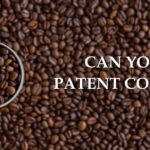Provisional vs. Nonprovisional Patents
Before 1995, inventors typically had to protect their inventions by filing a full patent application. Beginning in 1995, however, inventors were given an alternative method to obtain a filing date for their invention — the provisional patent application.
Although a provisional patent application is, in some ways, cheaper to file than a standard (nonprovisional) patent application, it doesn’t necessarily provide all the protections an inventor may think it does. At Kaufhold & Dix Patent Law, we can counsel you on the course of action that’s right for you and your invention.
What Are The Differences?
There are many differences between provisional and nonprovisional patent applications — in both the application process and in what they provide. Here are just a few:
Nonprovisional Patent Applications
- Nonprovisional patent applications are typically longer, more formal and contain particular sections that must meet the particular standards of the patent office. They are also more difficult to write and file.
- A nonprovisional patent application is examined by a patent examiner and can issue into enforceable claims for infringement.
- Nonprovisional patents provide 20 years of protection from the date of initial application.
- It typically takes the USPTO between one and three years to rule on a nonprovisional patent application, during which time the designation “patent pending” can be used in relation to the invention.
Provisional Patent Applications
- Provisional patent applications are (seemingly) easy to file — as they can be seen as simple, informal and quick. However, leaving out an element of your invention, failing to explain all of the operating elements, or using drawings that don’t match the written description could be fatal to your application and render it essentially worthless.
- Provisional patent applications are not examined by a patent examiner and cannot turn into real, enforceable patents. Patents are only ever granted from filing a nonprovisional application.
- The duration of a provisional patent application is one year. The filing of a provisional application does allow for use of the term “patent pending” during that one year.
- There is a 12-month window to file a corresponding nonprovisional patent application to benefit from the priority date of the provisional application. However, the inventor will lose the priority date for any new matter filed in the nonprovisional utility application.
- If the provisional application is written too narrowly (i.e. does not take account of possible modifications or ways around the sought after protection), a corresponding nonprovisional application will be weak and effectively unenforceable. Conversely, if the provisional application is not focused enough, a corresponding nonprovisional application may not be given the benefit of the filing date of the provisional application.
Which Choice Is Right For You? Provisional Patent or Nonprovisional Patent?
Although provisional patent applications are attractive to some inventors — and can offer some initial benefits — we at Kaufhold & Dix Patent Law generally counsel against provisional patents unless there are multiple versions of an invention and it is not yet known which version may be commercialized, the inventor cannot in any way afford a standard, nonprovisional patent application or there is an emergency need to file (e.g., to prevent loss of rights due to a previous public disclosure of the invention).
Sometimes an inventor considers filing their own provisional application believing it will protect them and possibly even reduce the cost of hiring a professional for the nonprovisional application. However, the provisional application may have little or no benefit if prepared incorrectly. An improper provisional application filing after a public use or disclosure of the invention may even result in being unable to file a nonprovisional application and a total loss of any potential rights to the invention. In our experience, every provisional application filing by an inventor has been fundamentally flawed in some way such that it would have been better to hire a professional for the provisional application or to have not filed the provisional application at all.
Contact our patent attorneys today to find out which type of patent is right for you. From our offices in Edina, Minnesota, and Sioux Falls, South Dakota, we help inventors across the country get the invention protection they need. Call 612-216-1161 for our Twin Cities office, 605-334-1571 for our Sioux Falls office or send our lawyers an email online.




